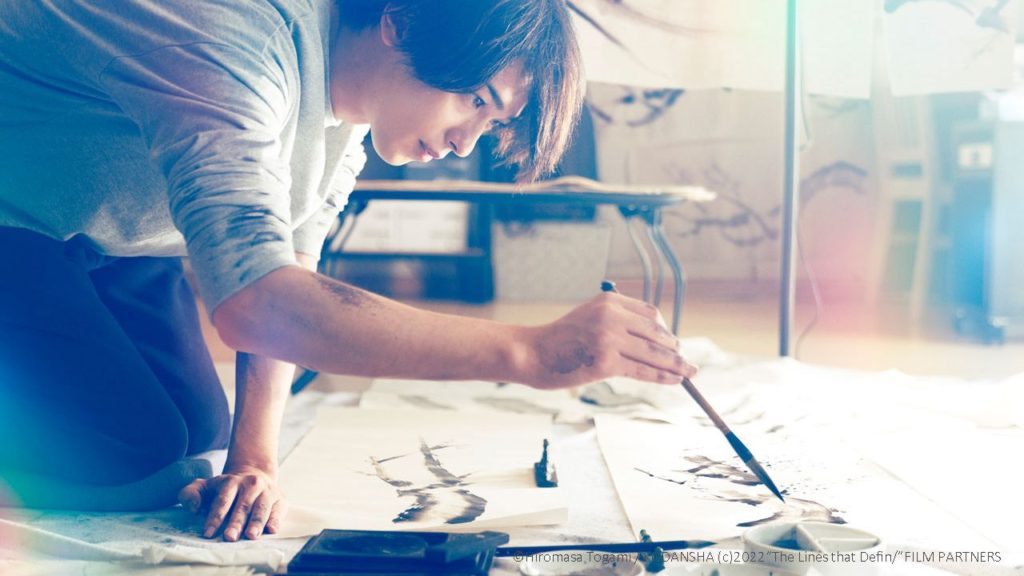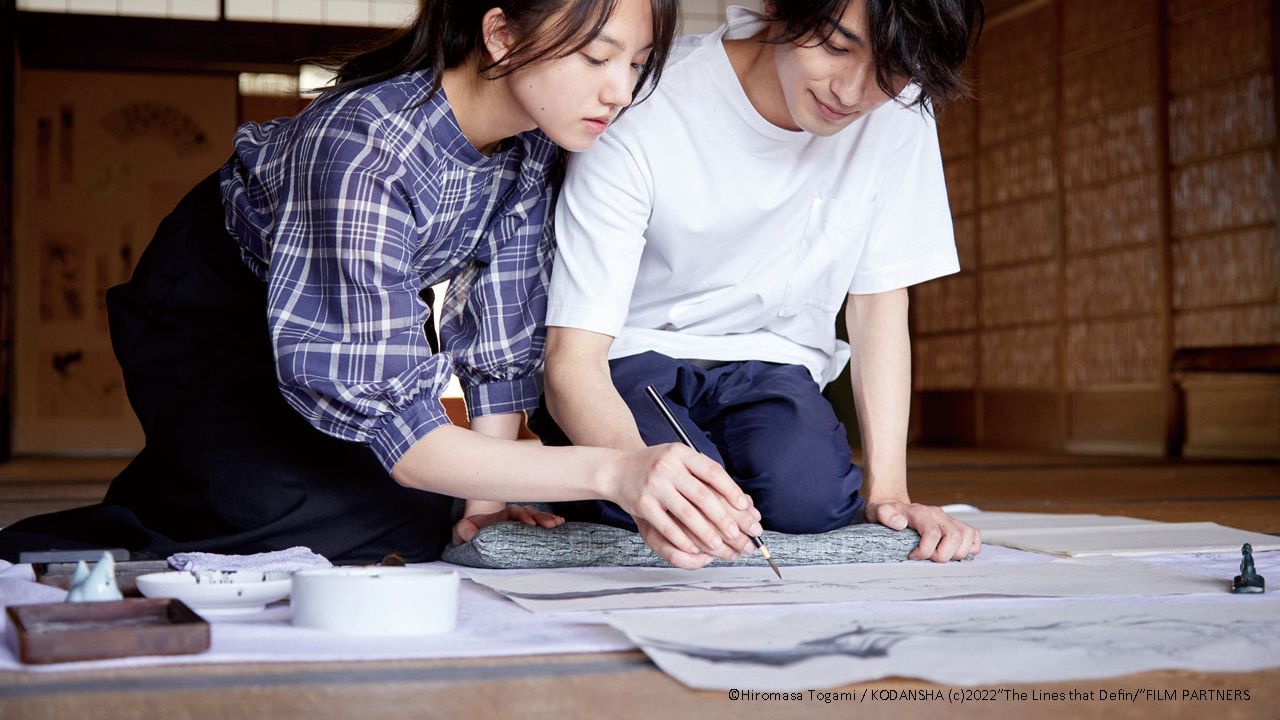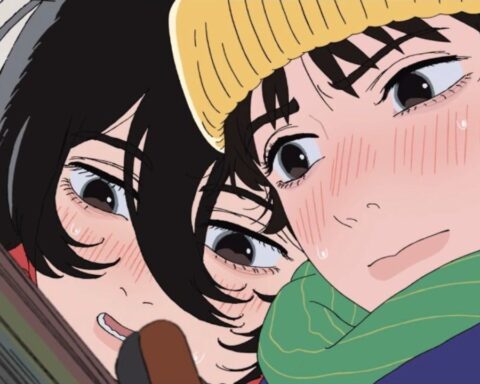If there’s one thing that Japan has alway been good at it’s been the exploitation of its art. They’ve been exporting it for hundreds of years, way before Hallyu. The Lines that Define Me is a wonderful and heartfelt love letter to one such art form: Suibokuga.
Suibokuga, a particular subset within sumi-e or ink-wash painting, focuses on layering three inks of different intensities in a single brush stroke. It’s not so much painting, like watercolour or oil, but more akin to drawing with a brush – a series of lines mindfully put onto a blank piece of paper. The deliberateness in which a Suibokuga master puts down each brush stroke is mesmerizing, as they gently eke their creations into life.
In this movie, it all starts with a meet-cute. Introverted and self-effacing university student, Sosuke Aoyama, is duped into helping out at a Suibokuga exhibition. There, he meets a gentle but wily old gentleman, who turns out to be Suibokuga master, Kozan Shinoda. By the end of the day, Kozan asks Sosuke to be his disciple; much to the chagrin of Chiaki Shinoda, a Suibokuga prodigy and Kozan’s estranged granddaughter. What unfolds is a series of experiences that help Sosuke overcome his past and embrace a new future. I know, I know, it all sounds very hifalutin, but the film does it in a really down to earth manner and is not pretentious at all. (I promise!)
Calm, Cozy, Contemplative

I think the charm of a lot of Japanese movies lie in its calm, and oftentimes cozy, storytelling – eschewing the need to be flashy or overly excitable; perhaps an aspect that prevails due to the deeply entrenched zen that comes with its religions and philosophies. They don’t rock the boat, but that doesn’t mean the boat is not moved. They find joy in simplicity instead. Suibokuga may not be colourful or flashy, but that doesn’t make it any less profound. Do not mistake its two dimensionality for lack of depth.
In a country that holds some of its cultural treasures in a vice-like death grip (I’m looking at you Kabuki, glorious as you are), it’s a pleasure to see something extolling the virtues of breathing life into its form. Time and time again, through a myriad of ways, Sosuke, and by extension Chiaki, are told to live again; to find the meaning behind what they are putting down with their lines. Because what are we as humans but the lines we put down on the blank canvases of our own lives? In the film, Sosuke is asked to face up to the tragedies of his past, and Chiaki to the weight of her own expectations.
While the movie does speak on grief, director Norihiro Koizumi choses not to present it as a deep dark pit, as is so often the case in movies. Koizumi makes a conscious decision to present it lightly, as one would an injured bird, as something to be overcome with gentleness and warmth. Through Sousuke’s ignited passion for Suibokuga, and the kindness of this new found family around him, he finds strength and purpose.
The Joy of Painting

The care and reverence with which the production takes to make this obvious love letter to Suibokuga is to be commended and evident from every angle, from the music they chose, to the shots they used to emphasize the painting process, to the framing of said works in progress. Rising star Ryusei Yokohama, who plays Sosuke, even trained under real-life Suibokuga legend Tohun Kobayashi for a year in order to prepare for this role. That dedication and passion for the art form is seen from Ryusei from the very start of the film, when Sosuke lays eyes on a Suibokuga for the first time, and every single time one is painted before him. The painting is both joyful and breathtaking, be it because of the rousing music, or beautiful visuals, I know I’d be hard pressed to see a live Suibokuga painting performance in the same way again. (Though I do urge you to do a quick YouTube search to see Tohun Kobayashi in action coz he is amah-zing!)
The only blemish in this otherwise delightful work is the characterization of Komae, Sosuke’s best friend. While conceived as the comic relief, and sometimes foil to the slightly melancholic Sosuke, his efforts are at best clumsy and forced, at worst callous and downright hurtful. Fortunately his appearances are few and far between so one can just groan for a few seconds before the coast clears.
The film is subtle in its messaging to the point of being almost unobtrusive. Much like Suibokuga itself. Which just goes to show that you don’t need to constantly bonk your audience on the head to get your message across. Just allow your characters to go on their own journeys and bring the audience along for the ride.









Follow Us